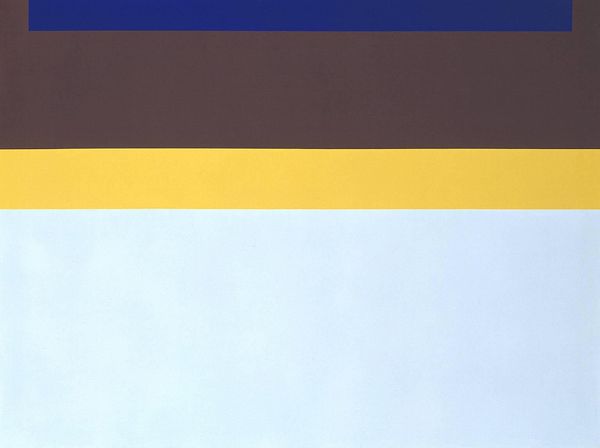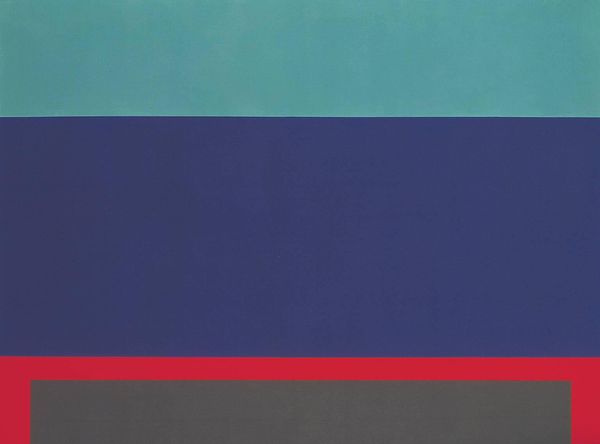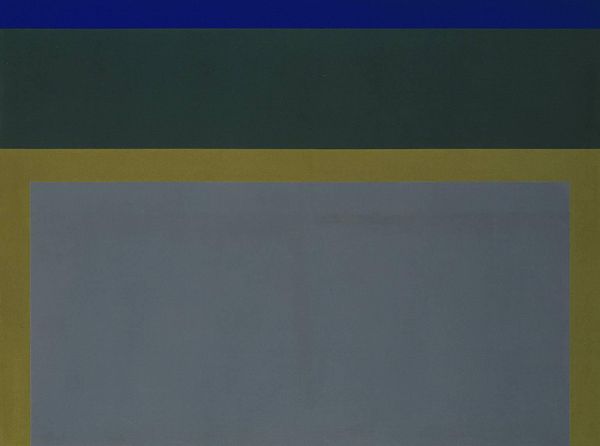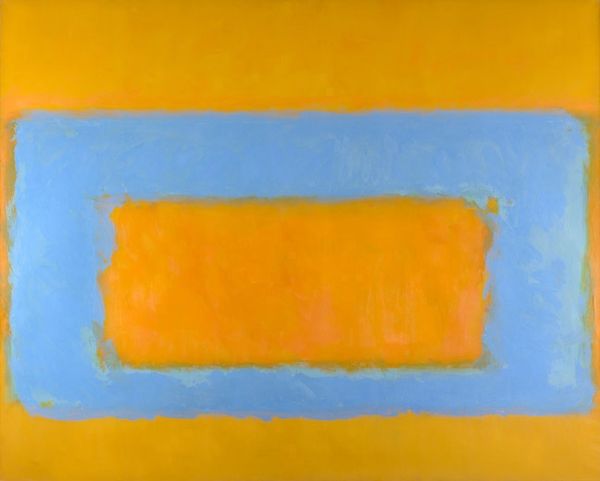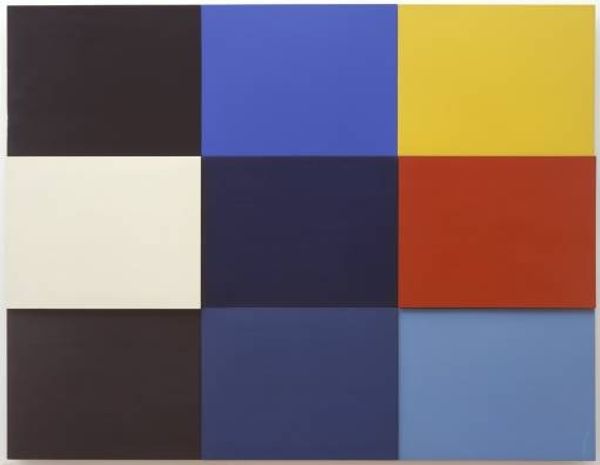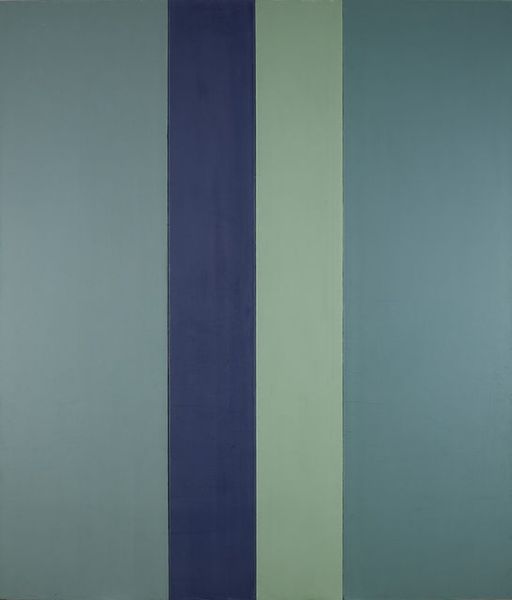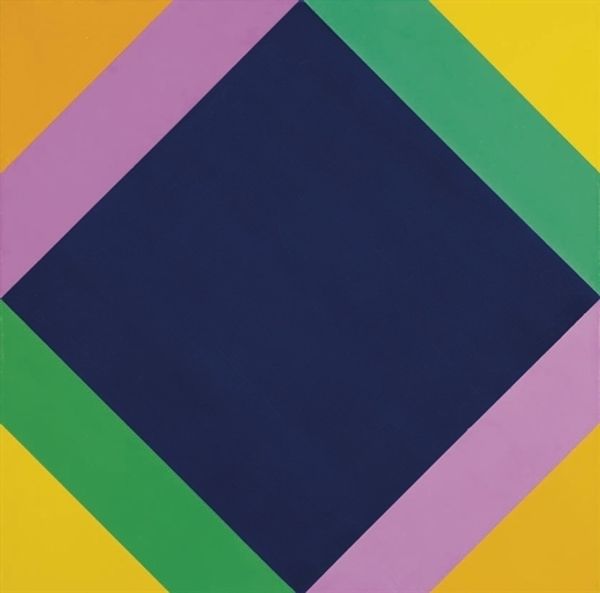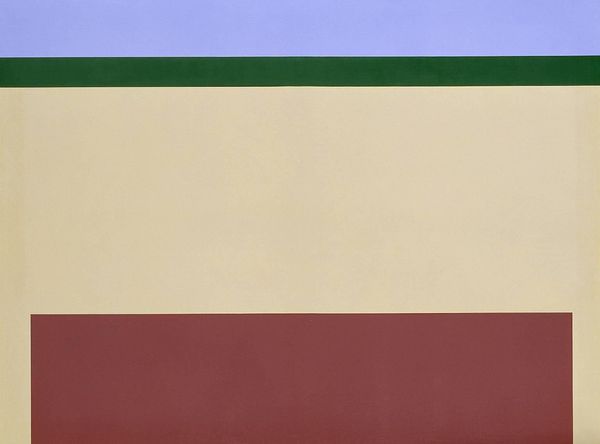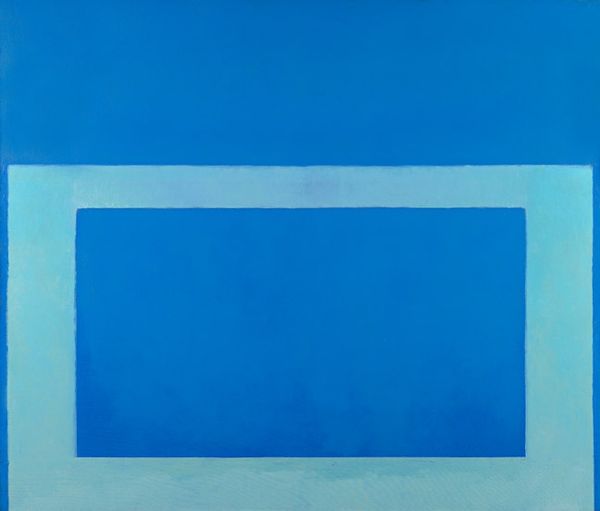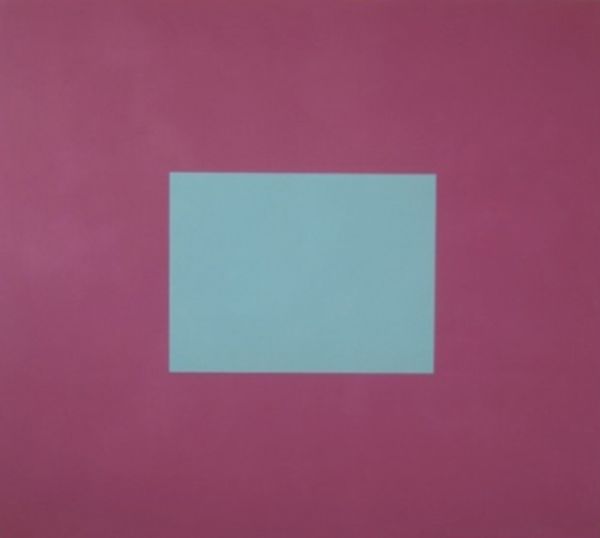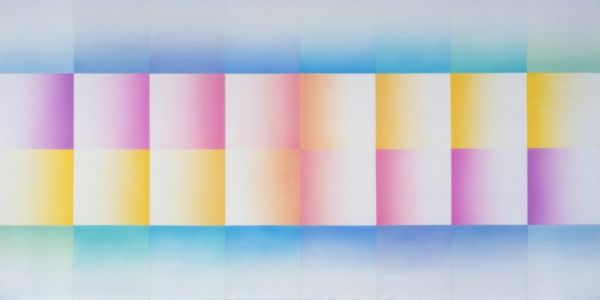![[no title] by Jean Spencer](/_next/image?url=https%3A%2F%2Fd2w8kbdekdi1gv.cloudfront.net%2FeyJidWNrZXQiOiAiYXJ0ZXJhLWltYWdlcy1idWNrZXQiLCAia2V5IjogImFydHdvcmtzLzBmZmNjOTZlLWM2ZmQtNGJiYi05YmZmLWZhNWY2YzY3OTE3MC8wZmZjYzk2ZS1jNmZkLTRiYmItOWJmZi1mYTVmNmM2NzkxNzBfZnVsbC5qcGciLCAiZWRpdHMiOiB7InJlc2l6ZSI6IHsid2lkdGgiOiAxOTIwLCAiaGVpZ2h0IjogMTkyMCwgImZpdCI6ICJpbnNpZGUifX19&w=3840&q=75)
Dimensions: support: 1127 x 1501 x 22 mm
Copyright: © Tate | CC-BY-NC-ND 4.0 DEED, Photo: Tate
Curator: Immediately, the balanced composition strikes me—the horizontal blocks of colour feel so poised. Editor: Indeed. This untitled work by Jean Spencer, dating from around the mid-20th century, uses large blocks of colour, and I'm interested in how Spencer’s labor has been applied in such a structured, almost regimented way. Curator: The colour choice is fascinating—that muted grey against the vibrant yellow, blue, and pink. It's a dance of restraint and exuberance. Editor: It is compelling to think about how the materials available during that time influenced this work, perhaps reflecting a post-war landscape of salvaged resources and optimistic color palettes. Curator: Perhaps the careful layering of these colors could symbolize an inherent hierarchy, or maybe there is a sense of resolution with all colors held within these clearly defined lines. Editor: Certainly. These paintings by Spencer urge one to consider how the conditions of artistic work shape what is possible to create, making us rethink the hierarchy of art. Curator: Ultimately, it's the careful execution that is so striking. Editor: And the way these works may have helped shift societal ideas on what constitutes art, the labour involved, that resonates most for me.
Comments
Join the conversation
Join millions of artists and users on Artera today and experience the ultimate creative platform.
tate 8 months ago
⋮
Jean Spencer was born in 1942 in Hampshire. She studied at Bath Academy of Art between 1960 and 1963 and began to produce work of a Constructivist nature. After leaving college Spencer became associated with a group of artists whose work was emphatically abstract, rational in its procedures and conceptual basis, and who frequently employed mathematical and systematic means to produce works of art. Spencer's earliest works included constructed abstract reliefs which employed mathematics as a means of generating formal relations and structures. Between 1966 and 1969, the mathematical basis of Spencer's work became more pronounced, so that her work frequently involved systematic variations around a simple geometric configuration. This led Spencer to work in series, a procedure which became a prominent characteristic of her subsequent work. During the 1970s she became a member of the Systems Group which she co founded with her husband, the artist Malcolm Hughes (1929-1997) in 1969. The recognition of the importance of systematic process was the core ethos of this association of artists and, in this collaborative context Spencer exhibited widely in Britain and abroad. In later years, Spencer's work gradually freed itself from its earlier adherence to mathematical principles and, instead, drew increasingly on her research into the properties and relations of colour, acquiring a more intuitive basis as it did so. Even so, her work remained rooted in the central principle of clarity - both visual and conceptual. The six works in this series are among the last Spencer worked on before her death in 1998. The series consists of six identically sized panels arranged in sequence. Each panel is divided into horizontal bands or blocks of colour of differing size, no one colour being repeated in the same image. Spencer places stripes of different hue, tone and intensity next to one another, exploring the affect one colour has in its neighbours. In the internal formal relations operating within each work, and also in the compositional breadth established within the group as a whole, the central tenets of Spencer's work - clarity and rational authority - achieve an expression which is at once grand and understated. The paintings were produced during a residency at Churchill College, Cambridge. However, illness made working difficult and the final painting was completed by an assistant working to her instructions, in the week she died. Further Reading:Michael Tooby, Countervail, exhibition catalogue, Mappin Art Gallery, Sheffield 1992, pp.22-3Michael Harrison, Testing the System, exhibition catalogue, Kettle's Yard, Cambridge 1996Norbert Lynton, Systems, exhibition catalogue, Arts Council, London 1972, p.48 Paul Moorhouse March 2000Revised by Imogen Cornwall-Jones December 2001
